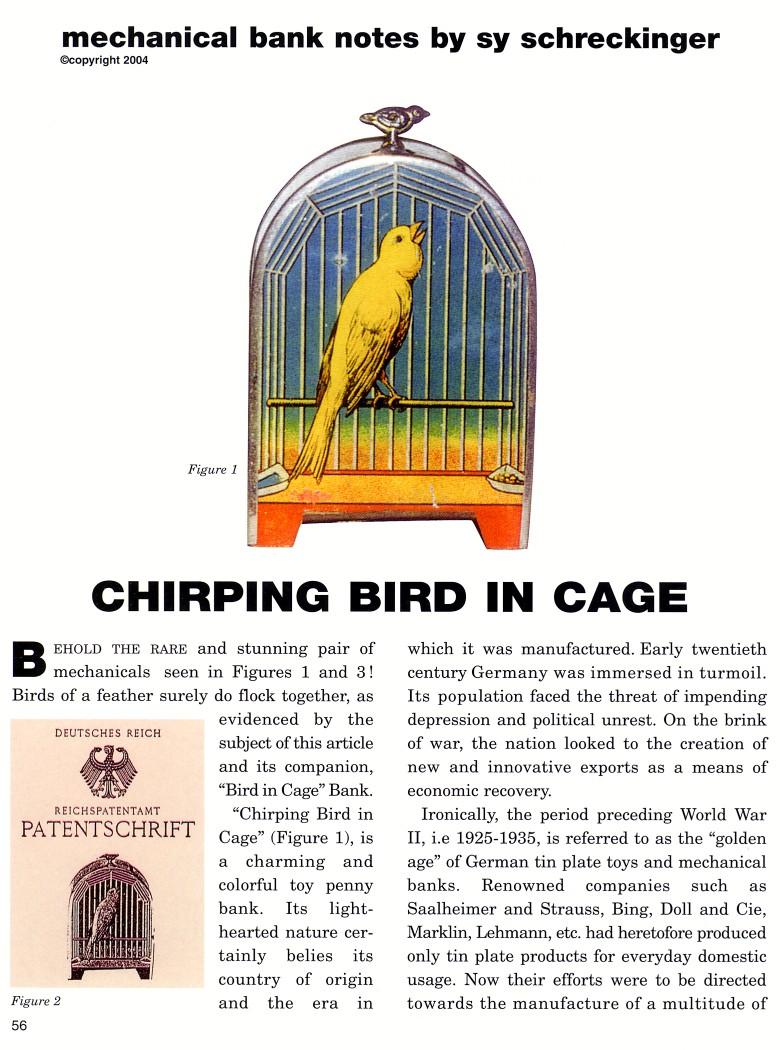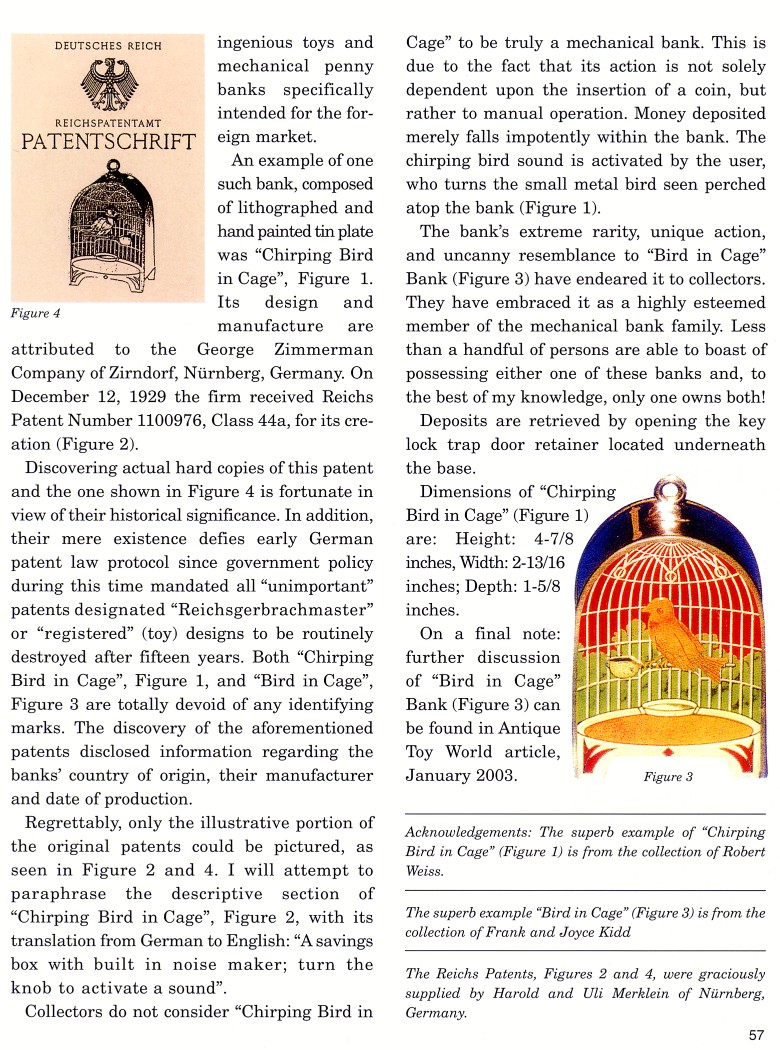|
Chirping Bird in Cage
by Sy Schreckinger – ANTIQUE TOY WORLD Magazine – September, 2004
Behold the rare and stunning pair of mechanicals
seen in Figures 1 and 3! Birds of a feather surely do flock together, as
evidenced by the subject of this article and its companion, "Bird in Cage"
Bank.
"Chirping Bird in Cage" (Figure 1), is a charming and colorful toy
penny bank. Its lighthearted nature certainly belies its country of origin
and the era in which it was manufactured. Early twentieth century Germany was immersed
in turmoil. Its population faced the threat of impending depression and
political unrest. On the brink of war, the nation looked to the creation
of new and innovative exports as a means of economic recovery.
Ironically, the period preceding World War II, i.e. 1925-1935, is
referred to as the "golden age" of German tin plate toys and mechanical
banks. Renowned companies such as Saalheimer and Strauss, Bing, Doll and
Cie, Marklin, Lehmann, etc. had heretofore produced only tin plate
products for everyday domestic usage. Now their efforts were to be
directed towards the manufacture of a multitude of ingenious toys and
mechanical penny banks specifically intended for the foreign market.
An example of one such bank, composed of lithographed and hand
painted tin plate was "Chirping Bird in Cage", Figure 1. Its design and
manufacture are attributed to the George Zimmerman Company of Zirndorf,
Nurnberg, Germany. On December 12, 1929 the firm received Reichs Patent
Number 1100976, Class 44a, for its creation (Figure 2).
Discovering actual hard copies of this patent and the one shown in
Figure 4 is fortunate in view of their historical significance. In
addition, their mere existence defies early German patent law protocol
since government policy during this time mandated all "unimportant"
patents designated "Reichsgerbrachmaster" or "registered" (toy) designs to
be routinely destroyed after fifteen years. Both "Chirping Bird in Cage",
Figure 1, and "Bird in Cage", Figure 3 are totally devoid of any
identifying marks. The discovery of the aforementioned patents disclosed
information regarding the banks' country of origin, their manufacturer and
date of production.
Regrettably, only the illustrative portion of the original patents
could be pictured, as seen in Figure 2 and 4. I will attempt to paraphrase
the descriptive section of "Chirping Bird in Cage", Figure 2, with its
translation from German to English: "A savings box with built in noise
maker; turn the knob to activate a sound".
Collectors do not consider "Chirping Bird in Cage" to be truly a
mechanical bank. This is due to the fact that its action is not solely
dependent upon the insertion of a coin, but rather to manual operation.
Money deposited merely falls impotently within the bank. The chirping bird
sound is activated by the user, who turns the small metal bird seen
perched atop the bank (Figure 1).
The bank's extreme rarity, unique action, and uncanny resemblance to
"Bird in Cage" Bank (Figure 3) have endeared it to collectors. They have
embraced it as a highly esteemed member of the mechanical bank family.
Less than a handful of persons are able to boast of possessing either one
of these banks and, to the best of my knowledge, only one owns both!
Deposits are retrieved by opening the key lock trap door retainer
located underneath the base.
Dimensions of "Chirping Bird in Cage" (Figure 1) are: Height: 4-7/8
inches, Width: 2-13/16 inches; Depth: 1-5/8 inches.
On a final note: further discussion of "Bird in Cage" Bank (Figure 3)
can be found in Antique Toy World article,
January 2003.
Acknowledgements: The superb example of "Chirping Bird in Cage"
(Figure 1) is from the collection of Robert Weiss.
The superb example "Bird in Cage" (Figure 3) is from the collection
of Frank and Joyce Kidd.
The Reichs Patents, Figures 2 and 4, were graciously supplied by
Harold and Uli Merklein of Nurnberg, Germany.
|


